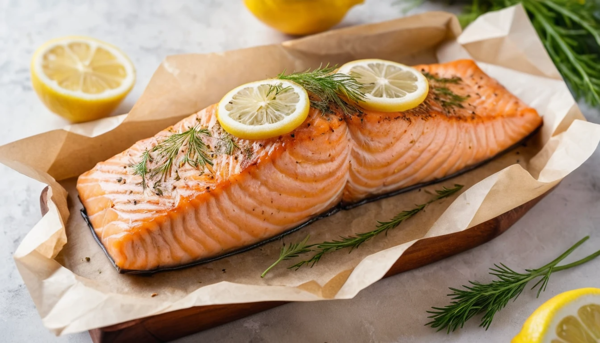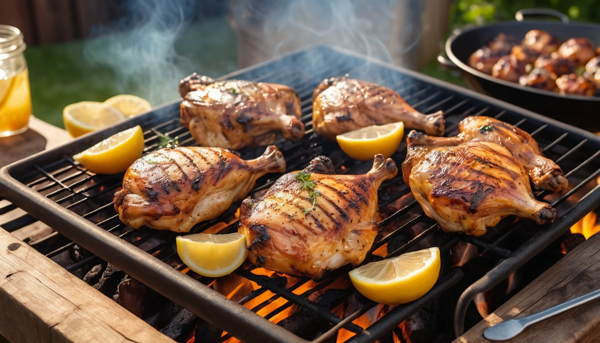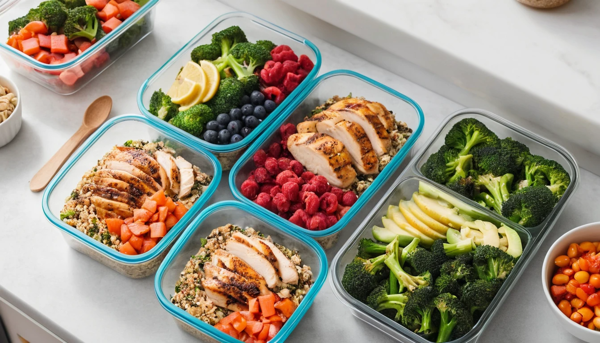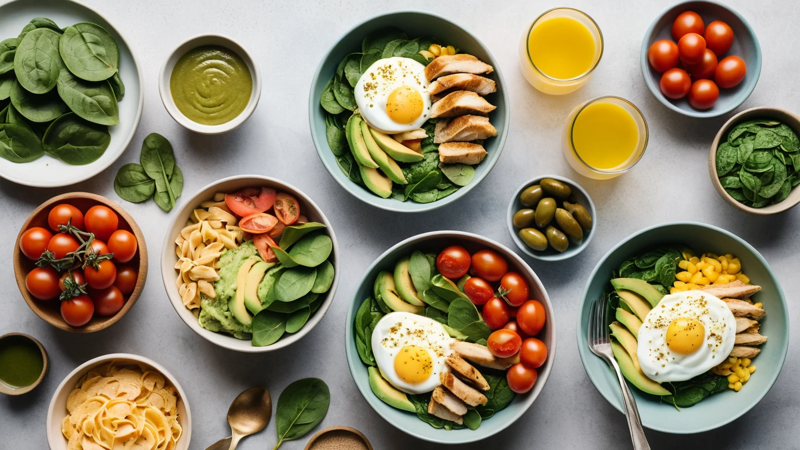What temperature to bake salmon fillet? Learn the perfect baking temps, tips, and tricks for moist, flaky salmon every time.
What Temperature To Bake Salmon Fillet: Perfectly Juicy Every Time
🐟 Ever Wondered Why Your Salmon Turns Out Dry?
Ever pulled salmon out of the oven only to find it dry? We’ve all been there. So, the big question is: what temperature to bake salmon fillet for perfect results every single time?
The short answer: Bake salmon fillet at 375°F to 400°F for the best balance of flaky texture and moist flavor. That’s the sweet spot for oven-baked salmon that melts in your mouth. Now, let’s dive deeper so you never waste another salmon fillet again.
🎯 Why Baking Temperature Matters
Cooking salmon is a delicate dance between heat and timing. Too low, and your fish turns mushy. Too high, and you end up with dry flakes instead of buttery softness. The right temperature ensures:
- Moist, tender flesh inside
- A lightly crisp top for flavor
- Even cooking throughout the fillet
- Safe internal temperature (145°F USDA recommended)
Think of baking salmon as balancing science with taste. Temperature is the steering wheel that drives both.
🔥 The Perfect Oven Temperature For Salmon Fillets
The ideal range is 375°F–400°F. At this point, the fish cooks evenly, stays juicy, and doesn’t lose flavor.
- 375°F (golden choice): Slow enough to keep it moist.
- 400°F (quick option): Slightly faster, adds light caramelization.
Lower than 350°F risks sogginess. Higher than 425°F risks dryness.
“Cook it hot enough to seal in flavor, but not so hot it burns away moisture.”
🕒 How Long To Bake Salmon At Different Temperatures
Here’s a handy breakdown depending on your oven setting and fillet thickness:
| Oven Temperature | Time Per Inch of Thickness | Results |
|---|---|---|
| 350°F | 20–22 minutes | Very tender, but softer texture |
| 375°F | 18–20 minutes | Perfect balance of flaky + juicy |
| 400°F | 15–18 minutes | Slightly crisp edges, moist center |
| 425°F | 12–15 minutes | Bold flavor, risk of dryness |
🧂 Should You Bake Salmon Covered Or Uncovered?
This depends on the finish you want:
- Covered with foil: Locks in steam, ultra-moist fish.
- Uncovered: Slightly drier, but with a crisp golden top.
Tip: For the best of both worlds, cover for the first half of baking, then uncover at the end for caramelization.
🌡️ Internal Temperature: The Real Key
The oven dial is only half the story. What truly matters is the internal temperature of your salmon fillet.
- USDA recommends 145°F at the thickest part.
- For juicier results, many chefs stop at 135°F, then rest for 5 minutes (carryover cooking).
👉 Always use an instant-read thermometer. It’s your best friend in the kitchen.
🍋 Flavor Boosters While Baking
Baking salmon isn’t just about the temp—it’s about how you season it. Popular add-ins include:
- Lemon slices for citrus brightness 🍋
- Fresh herbs like dill, thyme, or parsley
- Olive oil or melted butter for richness
- Garlic, paprika, or chili flakes for bold flavor
🥗 Best Side Dishes To Serve With Baked Salmon
Your salmon deserves the right co-stars on the plate. Try these:
- Roasted vegetables (asparagus, carrots, zucchini)
- Garlic mashed potatoes
- Quinoa or wild rice pilaf
- Fresh garden salad
| Side Dish | Why It Works With Salmon |
|---|---|
| Roasted Asparagus | Earthy crunch complements tender fish |
| Wild Rice | Nutty flavor balances salmon’s richness |
| Lemon Potatoes | Bright, citrusy, and filling |
| Fresh Greens | Adds refreshing balance |
💡 Pro Tips For Baking Salmon Fillets
- Bring salmon to room temp before baking (15 minutes).
- Pat it dry with paper towels for better texture.
- Don’t over-marinate. 30 minutes is enough.
- Skin side down helps retain moisture.
- Rest 5 minutes before serving.
These simple steps can take your salmon from “good” to “restaurant-quality.”
🧑🍳 Baking Skin-On vs. Skinless Salmon
- Skin-on fillet: Acts like a shield against overcooking. Easier to remove after baking.
- Skinless fillet: More direct flavor absorption. Needs careful monitoring to avoid dryness.
Most chefs prefer skin-on for oven baking—it’s like natural foil you can eat (if crisped).
🐠 Should You Bake Salmon Whole Or In Portions?
- Whole fillet: More impressive presentation, cooks slightly longer.
- Portion cuts: Faster cooking, easier serving, more consistent doneness.
If it’s a weeknight dinner, go with portions. For entertaining, wow your guests with a whole side of salmon.
🧊 Can You Bake Frozen Salmon Fillet?
Yes, you can bake salmon straight from frozen. Just add 5–7 extra minutes of cooking time.
| Method | Temperature | Cooking Time |
|---|---|---|
| Fresh Fillet | 375°F | 18–20 minutes |
| Frozen Fillet | 375°F | 23–27 minutes |
| Frozen Portions | 400°F | 18–22 minutes |
Pro tip: Rinse frozen salmon under cold water, pat dry, then season before baking.
🥄 Simple Marinades That Work Wonders
A marinade makes salmon more flavorful. Try these quick mixes:
- Honey Garlic: Soy sauce, honey, garlic, sesame oil.
- Lemon Herb: Olive oil, lemon juice, dill, parsley.
- Spicy Maple: Maple syrup, chili flakes, paprika.
🍷 Pairing Salmon With Drinks
- White wine: Sauvignon Blanc, Chardonnay.
- Beer: Light lager or wheat beer.
- Non-alcoholic: Sparkling water with citrus.
Good pairings elevate the dining experience to something memorable.
😋 Best Seasonings For Oven-Baked Salmon
Besides salt and pepper, try:
- Smoked paprika for depth
- Cajun blend for spice
- Garlic powder for savory warmth
- Lemon zest for zing
The beauty of salmon is how well it takes on different flavor profiles.
🏆 Common Mistakes To Avoid
- Overbaking past 145°F.
- Forgetting to let salmon rest before serving.
- Using too much marinade (overwhelms the flavor).
- Starting with cold salmon straight from fridge.
Avoid these pitfalls and you’ll never ruin another fillet.
✅ Conclusion
So, what temperature to bake salmon fillet? The magic number lies between 375°F and 400°F. This range ensures your salmon stays tender, flaky, and packed with flavor. Use a thermometer, let it rest, and season it with love. Combine these steps with the tips above, and you’ll enjoy salmon that tastes like it came straight from a top restaurant.
❓ FAQs
What temperature should I bake salmon for moist results?
Bake salmon fillet at 375°F for tender and juicy results. This temperature allows the fish to cook evenly without drying out. Always check the internal temperature.
How long to bake salmon at 400 degrees?
At 400°F, bake salmon for 15–18 minutes depending on thickness. Use a thermometer to confirm 135°F–145°F internal temperature. Rest before serving.
Is it better to bake salmon at 350 or 400?
350°F gives softer, more delicate texture. 400°F delivers crispier edges and faster cooking. Both work, but 375°F is the perfect middle ground.
Do you cover salmon when baking it?
Covering salmon traps steam and keeps it moist. Uncovered baking creates a golden, slightly crisp finish. Try both methods to see which you prefer.
Can you bake salmon straight from frozen?
Yes, just add 5–7 minutes of cooking time. Season frozen fillets well before baking. Always check for safe internal temperature before serving.








Leave a Reply